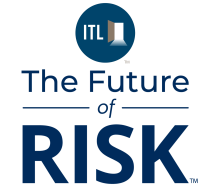Beyond the usual mortality risk metrics
Munich Re Life US recently collaborated with predictive health data analytics firm Klarity to analyze novel variables in the expansive UK Biobank dataset that are not typically considered in life insurance underwriting. The team filtered the Biobank data to simulate an “insurable population”.
Grip strength, sleep duration, and resting heart rate(RHR), in particular, show compelling evidence of being effective in refining and accurately segmenting mortality risk. The study also evaluated the predictive power of muscle strength by exploring the relationship between dominant hand grip strength (GS) and mortality risk.
Overall findings
Sleep duration
Seven hours of sleep per night is associated with the lowest mortality risk, while five or fewer hours sharply increases mortality by 50%, underscoring the critical importance of sufficient sleep.
Sufficient sleep is widely recognized as vital to physical and mental health and as protecting against cardiovascular disease and diabetes. Biobank individuals self-disclosed their typical hours of sleep, with nearly 90% of the “insurable” population reporting an average of six to eight hours per night and a median duration of seven hours.
Resting heart rate
A resting heart rate of 80-89 bpm has a nearly 50% higher relative mortality risk than a resting heart rate of 60-69 bpm.
Given its well-established link to cardiovascular health, resting heart rate is a critical overall mortality determinant that is part of the health assessment for Biobank participants. With data available for 92% of the “insurable” pool, the average RHR for study individuals is 30 to 174 bpm, with 81% in the 60 to 100 bpm “normal” range. Our analysis shows that confirms that relative mortality risk increases as resting heart rate increases. According to the American Heart Association, a lower RHR can indicate better heart function and cardiovascular fitness.
Grip strength
Grip strength is an indicator of overall physical strength and health and can effectively segment mortality risk across age and gender.
Dominant hand grip strength (GS) is a dimension of health not previously considered in life insurance underwriting; however, medical research suggests that it is inversely related to mortality risk in adults. With data available for over 99% of the “insurable” pool, we find that for both men and women, mortality improves as GS increases. While this metric differs significantly between males and females (GS of 42 kg vs. GS of 26 kg.), there‘s a strong relationship between GS and mortality across all age groups for both.
Poor GS is associated with an elevated mortality risk, and we find that the lowest GS category is associated with a mortality risk 1.5-2 times as high as the highest GS category, irrespective of age group and gender.
As an overall strength indicator, GS can be linked to physical function and the ability to perform the activities of daily living, such as bathing and eating, particularly or the oldest age group. For this reason, GS could be a useful addition to the traditional underwriting toolkit for mature ages, where frailty may be a concern.
Takeaways
Sleep has long been recognized as vital to physical and mental health. Resting heart rate (RHR) is a critical determinant of overall mortality due to its link to cardiovascular health. Dominant hand grip strength (GS) is a measure of muscular strength, which medical research suggests is inversely related to mortality risk in adults.
It bears repeating that attributes like grip strength require controlled conditions for accurate measurement, making their widespread use in life insurance underwriting challenging. Regardless, these findings highlight the potential for carriers to enhance their underwriting processes by incorporating next-gen attributes, and wearable technology provides an opportunity to access real-time, continuous data that could further enhance their predictive power for mortality risk.
Click here to read the full article, which provides further details on the data set and methodology. This study is part of our series examining the potential of third-party data sources to enhance life insurance underwriting.
Sponsored by ITL Partner: Munich Re








